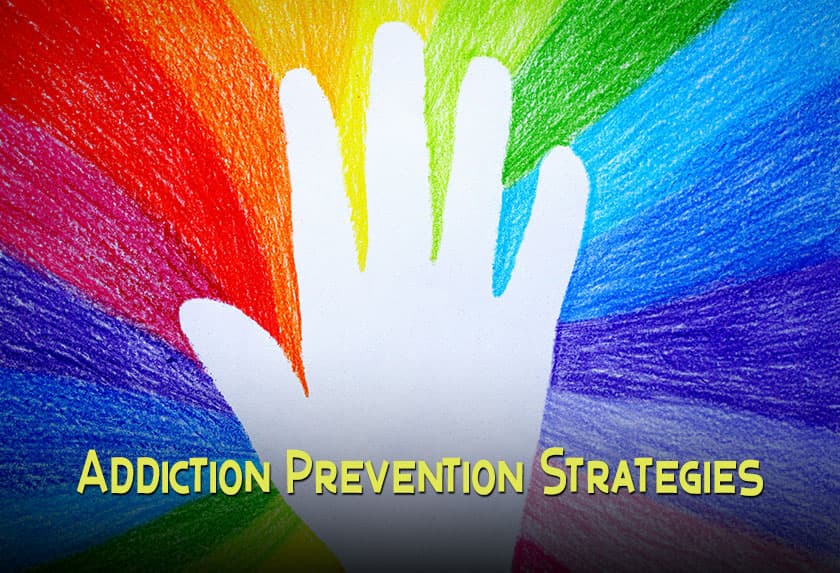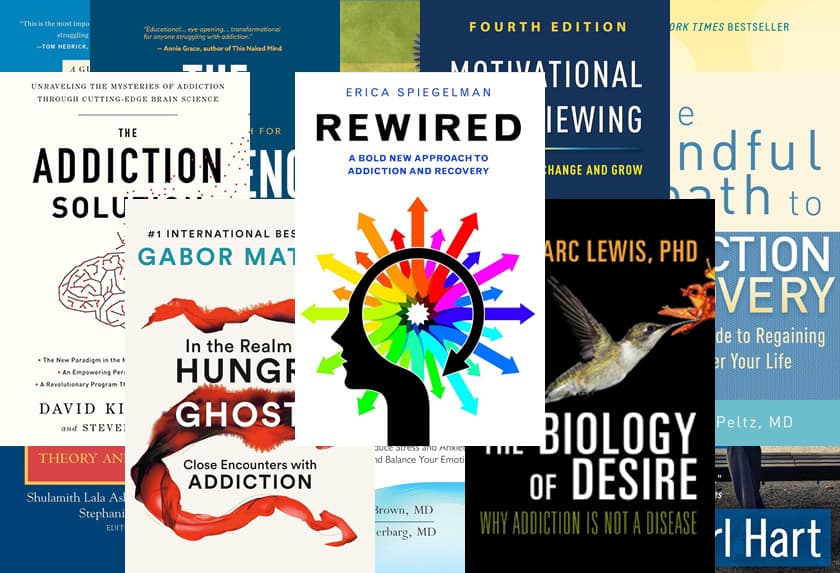In a world where temptations lurk around every corner, understanding and implementing effective addiction prevention strategies has never been more crucial.
The statistics are alarming: according to the National Center for Drug Abuse Statistics, a staggering 19.4% of Americans have used illicit drugs in the past year. This number serves as a stark reminder of the pervasive nature of substance abuse and the urgent need for robust prevention measures.
Addiction doesn’t discriminate. It affects people from all walks of life, regardless of age, gender, or socioeconomic status.
The impact of addiction extends far beyond the individual, rippling through families, communities, and society at large.
The economic burden, the strain on healthcare systems, and the emotional toll on loved ones underscore the importance of proactive prevention.
But here’s the good news: addiction is preventable.
By arming ourselves with knowledge, reading addiction prevention books and implementing proven strategies, we can significantly reduce the risk of falling into the trap of addiction.
This comprehensive guide will explore a range of effective addiction prevention strategies, from early intervention techniques to building resilience and creating supportive environments.
As we delve into these strategies, remember that prevention is not a one-size-fits-all approach. What works for one person may not work for another.
The key is to understand the various tools and techniques available and to find the combination that works best for each individual’s unique circumstances.
In the following sections, we’ll explore the intricacies of addiction, learn to recognize warning signs, discover how to build mental resilience, and understand the importance of a supportive environment.
We’ll also delve into the power of education, the role of healthy lifestyle choices, and when to seek professional help.
By the end of this guide, readers will be equipped with a comprehensive toolkit for safeguarding themselves and their loved ones against the perils of addiction.
Let’s embark on this journey to a healthier, addiction-free future together. The road may not always be easy, but with the right strategies and support, it’s a journey worth taking.
Understanding Addiction Prevention: The First Step
To effectively prevent addiction, one must first understand what it is and how it develops.
Addiction is a complex, chronic brain disorder characterized by compulsive engagement in rewarding stimuli despite adverse consequences.
It’s not simply a lack of willpower or a moral failing, as was once believed. Instead, addiction is a result of complex interactions between genetic predisposition, environmental factors, and individual choices.
The impact of addiction on individuals and society is profound and far-reaching.
On a personal level, addiction can devastate physical and mental health, destroy relationships, derail careers, and lead to financial ruin.
The psychological toll is immense, often resulting in feelings of shame, guilt, and hopelessness.
Societally, addiction strains healthcare systems, increases crime rates, and hampers economic productivity.
The National Institute on Drug Abuse estimates that substance abuse costs the United States more than $600 billion annually in healthcare expenses, lost workplace productivity, and crime-related costs.
Unfortunately, addiction is often shrouded in misconceptions that can hinder addiction prevention efforts.
One common myth is that addiction only affects those with weak willpower or moral deficiencies.
This stigmatizing belief not only prevents people from seeking help but also ignores the complex biological and environmental factors at play.
Another misconception is that addiction always involves illegal substances. In reality, many addictions involve legal substances like alcohol and prescription medications, or behaviors such as gambling or internet use.
Understanding the role of genetics and environment in addiction susceptibility is crucial for effective addiction prevention strategies.
Research has shown that genetics account for about 40-60% of a person’s vulnerability to addiction.
This means that individuals with a family history of addiction may be at higher risk.
However, having a genetic predisposition doesn’t guarantee that someone will develop an addiction.
Environmental factors play a significant role in whether these genetic vulnerabilities are expressed.
Environmental influences can include:
- family dynamics
- peer pressure
- trauma
- stress
- socioeconomic conditions
For instance, growing up in a household where substance abuse is prevalent can normalize addictive behaviors. Similarly, experiencing trauma or chronic stress can lead individuals to seek escape through substance use or addictive behaviors.
The interplay between genetics and environment is complex. A person with a genetic predisposition to addiction might never develop a problem if they grow up in a stable, supportive environment and learn healthy coping mechanisms.
Conversely, someone without a family history of addiction might still develop a substance use disorder if exposed to significant environmental risk factors.
Understanding these factors is crucial because it shifts the focus of prevention from blame and stigma to compassion and targeted intervention.
By recognizing the multifaceted nature of addiction, we can develop more effective addiction prevention strategies that address both genetic and environmental risk factors.
Moreover, this understanding highlights the importance of early intervention and comprehensive prevention programs.
These programs should not only educate about the dangers of substance use but also focus on building resilience, developing healthy coping mechanisms, and creating supportive environments.
By addressing the root causes and risk factors of addiction, rather than just its symptoms, we can create more effective and lasting prevention strategies.
In the next section, we’ll explore how to recognize the early warning signs of addiction, a critical skill in preventing the development of full-blown substance use disorders.
Early Intervention: Recognizing Warning Signs
Early intervention is a cornerstone of effective addiction prevention.
By identifying and addressing potential issues before they escalate into full-blown addiction, individuals and their support networks can significantly reduce the risk of long-term substance abuse problems.
Recognizing the warning signs of addiction is a crucial skill that can make the difference between early recovery and years of struggle.
One of the most important aspects of early intervention is being aware of red flags in behavior and lifestyle changes.
These signs can be subtle at first, easily dismissed as temporary phases or reactions to stress.
However, when observed consistently over time, they can indicate the development of an addiction.
Common behavioral red flags include:
- Sudden changes in social circles or isolation from friends and family
- Unexplained financial problems or requests to borrow money
- Neglect of responsibilities at work, school, or home
- Secretive behavior or lying about activities and whereabouts
- Loss of interest in previously enjoyed activities or hobbies
- Dramatic mood swings, feening or unexplained irritability
- Changes in sleep patterns, either sleeping too much or too little
- Neglect of personal hygiene or appearance
Lifestyle changes that may indicate a developing addiction include:
- Frequent absences from work or school
- Unexplained need for money or financial problems
- Changes in eating habits, either eating much more or much less than usual
- Staying out late regularly without explanation
- Suspicious phone calls or text messages
- Possession of drug paraphernalia or hiding alcohol bottles
In addition to behavioral and lifestyle changes, there are also emotional and physical symptoms to watch for.
Emotionally, individuals developing an addiction may experience:
- Increased anxiety or paranoia
- Depression or feelings of hopelessness
- Mood swings or irritability
- Lack of motivation
- Difficulty concentrating
- Feelings of shame or guilt
Physical symptoms can vary depending on the substance being abused but may include:
- Bloodshot eyes or dilated pupils
- Sudden weight loss or gain
- Deterioration of physical appearance
- Tremors, slurred speech, or impaired coordination
- Unusual smells on breath, body, or clothing
- Frequent nosebleeds (for some types of drug use)
- Track marks on arms or legs (for intravenous drug use)
It’s important to note that the presence of one or two of these signs doesn’t necessarily indicate addiction. However, if multiple signs are present and persist over time, it may be cause for concern.
The importance of addressing these issues early cannot be overstated. Early intervention can prevent the devastating consequences of full-blown addiction, including severe health problems, legal issues, financial ruin, and damaged relationships.
The earlier an addiction is addressed, the higher the chances of successful recovery.
When these warning signs are observed, it’s crucial to approach the situation with compassion and understanding.
Addiction often stems from underlying issues such as trauma, mental health problems, or difficulty coping with stress.
By addressing these root causes early, it’s possible to prevent the development of addiction and promote overall well-being.
However, confronting someone about potential addiction can be challenging. It’s important to approach the conversation in a non-judgmental manner, expressing concern rather than accusations.
Offering support and resources, such as suggesting a visit to a healthcare provider or counselor, can be more effective than ultimatums or threats.
For those concerned about their own behaviors, seeking help early is a sign of strength, not weakness.
Many resources are available, from confidential helplines to support groups and professional counseling services.
Taking that first step to seek help can be daunting, but it’s a crucial move towards preventing the escalation of addictive behaviors.
In the next section, we’ll explore strategies for building resilience, a key factor in preventing addiction and maintaining long-term recovery.
By developing healthy coping mechanisms and strengthening mental fortitude, individuals can better resist the lure of addictive substances and behaviors, even in the face of life’s challenges.
Building Resilience: Strengthening Your Mental Fortress
Building resilience is a crucial component of building an addiction prevention strategy.
Resilience is the ability to adapt to stress and adversity, bouncing back from difficult experiences.
In the context of addiction prevention, resilience acts as a mental fortress, protecting individuals from turning to substances or addictive behaviors as coping mechanisms.
Developing healthy coping mechanisms is at the core of building resilience.
These are positive ways to deal with stress, negative emotions, and challenging situations without resorting to substance use or other harmful behaviors.
Some effective coping mechanisms include:
- Mindfulness and meditation: These practices help individuals stay present and manage stress more effectively. Regular meditation can reduce anxiety, improve emotional regulation, and increase self-awareness.
- Physical exercise: Regular physical activity releases endorphins, natural mood boosters that can help combat stress and depression. Exercise also provides a healthy outlet for frustration and excess energy.
- Creative expression: Activities like art, music, writing, or dance can serve as emotional outlets and sources of joy and fulfillment.
- Problem-solving skills: Learning to break down problems into manageable parts and develop action plans can reduce feelings of overwhelm and helplessness.
- Time management: Effective time management reduces stress and increases a sense of control over one’s life.
- Social connection: Building and maintaining supportive relationships provides emotional support and a sense of belonging.
Stress management techniques are another critical aspect of building resilience.
Chronic stress can increase vulnerability to addiction, making stress management an essential skill.
Some effective stress management techniques include:
- Deep breathing exercises: Simple breathing techniques can activate the body’s relaxation response, reducing stress and anxiety.
- Progressive muscle relaxation: This technique involves tensing and relaxing different muscle groups, promoting physical and mental relaxation.
- Guided imagery: Using mental images to create a sense of calm and relaxation can be a powerful stress-reduction tool.
- Time in nature: Spending time outdoors has been shown to reduce stress and improve overall well-being.
- Limiting caffeine and sugar intake: These substances can exacerbate stress and anxiety.
- Adequate sleep: Prioritizing good sleep hygiene can significantly reduce stress levels and improve overall resilience.
The power of positive self-talk and mindfulness cannot be overstated in building resilience.
The way individuals talk to themselves internally can significantly impact their ability to cope with challenges.
Negative self-talk can increase stress and vulnerability to addiction, while positive self-talk can boost confidence and resilience.
Mindfulness, the practice of being fully present and engaged in the moment, can help individuals recognize negative thought patterns and choose more positive, constructive ways of thinking.
It can also help in managing cravings and reducing the risk of relapse for those in recovery.
Developing resilience is not a quick or easy process. It requires consistent effort and practice.
However, the benefits extend far beyond addiction prevention. Resilient individuals are better equipped to handle life’s challenges, maintain positive relationships, and achieve their goals.
It’s important to note that building resilience doesn’t mean never experiencing stress or negative emotions.
Instead, it’s about developing the skills to navigate these experiences effectively without turning to harmful coping mechanisms.
By focusing on building resilience, individuals can create a strong foundation for addiction prevention strategies.
This mental fortress serves as a buffer against the stresses and challenges that might otherwise lead to substance use or addictive behaviors.
Creating a Supportive Environment
The environment in which an individual lives, works, and socializes plays a big role in addiction prevention.
A supportive environment can significantly reduce the risk of addiction, while a negative or stressful environment can increase vulnerability.
Creating and maintaining a supportive environment is therefore one of the key addiction prevention strategies.
The impact of social circles on addiction risk cannot be overstated. Peer influence is particularly strong during adolescence and young adulthood, but it continues to play a role throughout life.
Individuals who associate with others who use substances are more likely to engage in substance use themselves. This is not just due to peer pressure, but also because of the normalization of substance use within these social groups.
To cultivate healthy relationships that support addiction prevention:
- Choose friends wisely: Surround yourself with people who have positive habits and supportive attitudes.
- Set clear boundaries: It’s okay to distance yourself from relationships that encourage or enable substance use.
- Engage in healthy activities: Participate in social activities that don’t revolve around substance use, such as sports, hobby groups, or volunteer work.
- Communicate openly: Foster relationships where open, honest communication is valued and practiced.
- Be a positive influence: Model healthy behaviors and attitudes for others in your social circle.
- Seek support: Build relationships with people who support your goals for a healthy, substance-free life.
The role of family in addiction prevention is equally crucial. Family dynamics can either protect against or contribute to the risk of addiction.
A supportive family environment can provide:
- Emotional support: A place where individuals feel loved, valued, and understood.
- Clear communication: Open dialogue about expectations, concerns, and feelings.
- Consistent rules and consequences: Clear boundaries regarding substance use and other risky behaviors.
- Positive role modeling: Parents and older siblings who model healthy coping mechanisms and responsible attitudes towards substances.
- Early intervention: A family environment where concerns are addressed promptly and professionally when needed.
- Education: Family discussions about the risks of substance use and addiction.
For families looking to create a more supportive environment:
- Improve communication: Practice active listening and express feelings openly and respectfully.
- Spend quality time together: Regular family activities can strengthen bonds and provide opportunities for open dialogue.
- Address conflicts constructively: Learn healthy conflict resolution skills as a family.
- Seek family counseling if needed: Professional help can address deep-seated issues and improve family dynamics.
- Create a stable home environment: Minimize chaos and unpredictability, which can be stressors that increase addiction risk.
- Support each family member’s mental health: Encourage seeking help for mental health issues, which often co-occur with addiction.
Beyond family and social circles, the broader community environment also plays a role in addiction prevention strategies.
Communities can support prevention efforts through:
- Access to mental health resources: Ensuring availability of counseling, support groups, and treatment options.
- Community education programs: Offering workshops and seminars on addiction prevention and mental health.
- Youth programs: Providing positive activities and mentorship for young people.
- Enforcement of laws and regulations: Consistently enforcing laws regarding underage substance use and drug trafficking.
- Supportive workplace policies: Implementing employee assistance programs and stress management resources.
- Community-wide prevention initiatives: Organizing events and campaigns to raise awareness about addiction prevention.
Creating a supportive environment is an ongoing process that requires effort at the individual, family, and community levels.
By fostering environments that promote health, well-being, and positive coping strategies, we can significantly reduce the risk of addiction and support those in recovery.
Remember, no one exists in isolation. The environments we create and participate in shape our experiences and influence our choices.
By actively working to create supportive environments, we not only protect ourselves but also contribute to the well-being of those around us.
Education and Awareness: Knowledge is Power
Education and awareness form the backbone of effective addiction prevention strategies.
By arming individuals with accurate information about substances and addiction, we can empower them to make informed decisions and recognize potential risks.
The importance of accurate information about substances and addiction cannot be overstated.
Misinformation can lead to dangerous misconceptions, underestimation of risks, and poor decision-making.
Comprehensive education should cover:
- Types of addictive substances and behaviors
- Short-term and long-term effects of substance use
- The science of addiction and how it affects the brain
- Risk factors for addiction
- Signs and symptoms of substance abuse and addiction
- The impact of addiction on individuals, families, and communities
- Treatment options and recovery processes
Age-appropriate education strategies are also a must for effective prevention.
Different age groups require different approaches:
- Teenagers (ages 14-18): Provide detailed information about various substances, their effects, and the risks of addiction. Address peer pressure and teach stress management techniques.
- Young adults (ages 19-25): Focus on the long-term consequences of substance abuse, including impact on career and relationships. Address specific contexts like college environments.
- Adults: Provide updated information on addiction risks, including prescription drug abuse and the interaction between substances and health conditions.
Resources for ongoing learning and support are essential for maintaining awareness and reinforcing prevention strategies.
Some valuable resources include:
- National Institute on Drug Abuse (NIDA): Offers research-based information on drug use and addiction.
- Substance Abuse and Mental Health Services Administration (SAMHSA): Provides a national helpline and treatment locator.
- Local community health centers: Often offer educational programs and support groups.
- Online courses and webinars: Many organizations offer free or low-cost educational opportunities.
- Support group websites: Organizations like Alcoholics Anonymous and Narcotics Anonymous offer information and meeting locators.
- School and workplace prevention programs: Many institutions offer ongoing education and support.
Remember, education is not a one-time event but an ongoing process. Staying informed about the latest research and trends in substance use and addiction is crucial for effective prevention.
Healthy Lifestyle Choices: Your Shield Against Addiction
Adopting a healthy lifestyle is a powerful prevention strategy against addiction. Healthy choices not only improve overall well-being but also reduce the likelihood of turning to substances as a coping mechanism.
The role of regular exercise in preventing addiction is significant.
Physical activity:
- Releases endorphins, providing a natural “high”
- Reduces stress and anxiety
- Improves mood and self-esteem
- Provides a healthy outlet for excess energy and emotions
- Promotes better sleep, which is crucial for mental health
Incorporating exercise into daily routines doesn’t have to be complex.
Activities like brisk walking, cycling, swimming, or joining sports teams can make a significant difference.
Nutrition’s impact on mental health and addiction resistance is often underestimated.
A balanced diet:
- Stabilizes mood by regulating blood sugar levels
- Provides necessary nutrients for brain health
- Improves energy levels and overall well-being
- Can reduce cravings for substances
Focusing on whole foods, reducing processed food intake, and staying hydrated are simple yet effective dietary strategies.
The importance of quality sleep in maintaining mental balance cannot be overstated.
Poor sleep can lead to increased stress, mood disturbances, and impaired decision-making, all of which can increase vulnerability to addiction.
To improve sleep:
- Maintain a consistent sleep schedule
- Create a relaxing bedtime routine
- Limit screen time before bed
- Ensure a comfortable sleep environment
- Avoid caffeine and alcohol close to bedtime
By prioritizing these healthy lifestyle choices, individuals can build a strong foundation for addiction prevention and overall well-being.
Professional Help: When and How to Seek It
While prevention strategies are crucial, it’s equally important to recognize when professional help is needed.
Seeking help early can prevent the progression of substance use into full-blown addiction.
Types of professional support available include:
- Therapists and counselors: Provide individual or group therapy to address underlying issues and develop coping strategies.
- Addiction specialists: Offer specialized knowledge in substance use disorders and treatment options.
- Psychiatrists: Can diagnose and treat co-occurring mental health disorders, which often accompany addiction.
- Support groups: Offer peer support and community for those at risk or in recovery.
- Outpatient programs: Provide structured support while allowing individuals to maintain daily routines.
- Inpatient programs: Offer intensive, residential treatment for severe cases.
It’s important to remember that seeking help is a sign of strength, not weakness.
To combat stigma:
- Educate yourself and others about addiction as a health issue, not a moral failing.
- Share stories of recovery to demonstrate that seeking help leads to positive outcomes.
- Use person-first language (e.g., “person with substance use disorder” instead of “addict”).
- Support policies that treat addiction as a health issue rather than a criminal one.
Finding the right professional involves:
- Researching credentials and specializations
- Checking insurance coverage and financial options
- Considering location and scheduling convenience
- Looking for professionals who use evidence-based practices
- Trusting your instincts about personal comfort with the professional
Remember, it may take time to find the right fit, and it’s okay to try different options.
Technology and Addiction Prevention Strategies
In the digital age, technology plays a dual role in addiction prevention. While it can contribute to certain addictive behaviors, it also offers powerful tools for prevention and recovery.
Apps and tools for tracking habits and mood can be valuable in prevention efforts.
These include:
- Habit trackers: Help monitor behaviors and identify patterns.
- Mood tracking apps: Aid in recognizing emotional triggers.
- Mindfulness apps: Offer guided meditations and stress reduction techniques.
- Sobriety counters: Provide motivation for those in recovery.
- Virtual support group platforms: Offer accessibility to support networks.
Online support communities have become increasingly popular and beneficial.
They offer:
- 24/7 accessibility
- Anonymity for those not ready for face-to-face interactions
- Diverse perspectives and experiences
- Resources and information sharing
- A sense of belonging and understanding
However, technology use itself can become problematic. Managing screen time and digital addictions is crucial.
Strategies include:
- Setting device-free times and zones
- Using app blockers or time-limiting software
- Practicing mindful technology use
- Engaging in offline activities and hobbies
- Modeling healthy technology use for children and peers
By leveraging the positive aspects of technology while being mindful of its potential pitfalls, individuals can enhance their addiction prevention efforts.
Conclusion
Addiction prevention is a multifaceted endeavor that requires ongoing effort and awareness.
By understanding the nature of addiction, recognizing early warning signs, building resilience, creating supportive environments, prioritizing education and healthy lifestyles, seeking professional help when needed, and leveraging technology wisely, individuals can significantly reduce their risk of addiction.
Remember, prevention is not about perfection, but about making informed choices and developing healthy coping strategies.
Every step taken towards prevention is a step towards a healthier, more fulfilling life.
As we navigate the challenges of an increasingly complex world, let’s commit to supporting one another in these prevention efforts.
Whether you’re concerned about your own risk, worried about a loved one, or simply looking to create a healthier community, know that your efforts matter.
Implementing these addiction prevention strategies in daily life may seem daunting, but start small.
Choose one area to focus on and gradually incorporate others. Seek support when needed, celebrate small victories, and remember that prevention is an ongoing journey, not a destination.
By working together and staying informed, we can create a society that not only prevents addiction but promotes overall well-being for all.
The power to shape a healthier future is in our hands. Let’s use it wisely.








